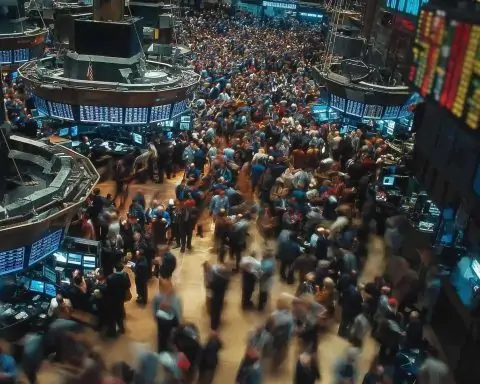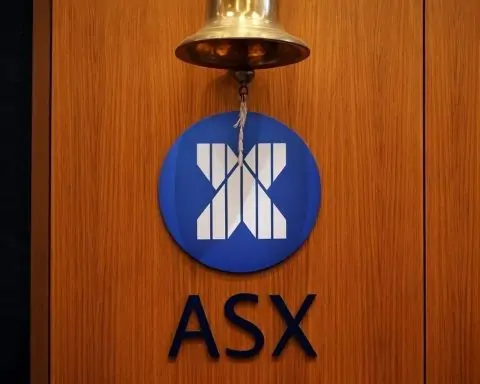- Gold Price Rally: Gold is trading around $4,000 per ounce (late Oct 2025) after hitting an all-time high of $4,381 on Oct. 20 [1]. The metal is up roughly 50–60% year-to-date [2] – its strongest annual run since 1979.
- Driving Forces: A “perfect storm” of factors is fueling this rally: stubborn inflation, expectations of Federal Reserve rate cuts, and global uncertainty (wars in Ukraine and the Middle East, U.S.–China trade friction) have pushed investors into gold as a safe haven [3] [4].
- Silver & Crypto: Other safe-havens have also jumped. Silver climbed to record levels (around $54/oz by mid-Oct, roughly +70% in 2025 [5] [6]), and Bitcoin recently hit new highs (~$125,000, about +33% YTD [7]). Analysts note that gold and Bitcoin are “decentralized store[s] of value” moving in tandem [8].
- Demand & Flows: Central banks are stockpiling gold, diversifying away from the dollar [9]. Gold-backed ETFs saw record inflows (~$64 billion in 2025 YTD, including a $17.3B September alone) [10]. In India and China, consumer buying during festival seasons has surged as well.
- Forecasts: Major banks have lifted forecasts. JPMorgan projects gold averaging $5,055/oz by late 2026 [11], and analysts at Bank of America, SocGen and HSBC are eyeing $sim$5,000/oz by 2026 [12] [13]. By contrast, some cautionary voices (e.g. Capital Economics) have trimmed estimates (to ~$3,500 by end-2026) noting that the recent 25% jump since August “is much more difficult to justify” [14].
- Investor Sentiment: Market sentiment is overwhelmingly bullish – JP Morgan’s Natasha Kaneva says “Gold remains our highest conviction long for the year” [15]. Even Bridgewater’s Ray Dalio advises keeping a sizeable gold allocation (“one asset that does very well when the typical parts of the portfolio go down”) [16]. Still, some analysts warn of profit-taking after this “parabolic” surge – Gautam Shah of Goldilocks Research called this a “good time to convert paper profit into real profit” [17].
Current Gold Prices & Recent Trends
As of late October 2025, spot gold is hovering around $4,000 per ounce. After breaching the $4,000 barrier for the first time in early October, gold surged to a record $4,381/oz on Oct. 20 [18]. Prices then retreated briefly – falling below $4,000 around Oct. 26–27 amid easing U.S.–China trade tensions [19] [20] – before recovering above $4,000 on Oct. 30 in the wake of Fed rate-cut optimism [21]. On Oct. 30, spot gold was trading near $4,004/oz, about 2% higher on the day after the Fed cut rates [22] [23]. This volatility aside, gold is still on pace for roughly a 3–4% gain in October, which would mark its third consecutive monthly rise [24] [25].
Year-to-date, gold’s rally has been breathtaking: from roughly $2,650 in January 2025 to about $4,000 now, a gain of over 50% [26]. Reuters notes this is “on pace for its strongest annual performance since 1979” [27]. To put it in context, by mid-October gold was already “more than 60% higher” than a year ago [28], a feat surpassed only by a few asset booms in history. In contrast, global stocks and most other commodities have lagged far behind (silver being the closest), underscoring gold’s unique role as a haven amid turmoil [29].
Expert Commentary & Outlook
Analysts and strategists across Wall Street are weighing in on gold’s frenzy. JPMorgan’s commodities team remains very bullish – Natasha Kaneva (Head of Global Commodities Strategy) says “Gold remains our highest conviction long for the year” [30] and sees further upside as the Fed moves into a cutting cycle. Her colleague Gregory Shearer points to multiple tailwinds – from stagflation anxiety to dollar debasement hedging – that “supports gold’s upside” [31]. Reflecting this confidence, JPMorgan forecasts gold at $5,055 by late 2026 [32]. Similarly, Wells Fargo’s team just hiked its 2026 gold target to $4,500–4,700/oz (up from $3,900–4,100) citing ongoing trade uncertainty and geopolitical risks [33]. Even Morgan Stanley says that big names urging higher gold allocations (“we don’t own enough gold”) help fuel the ETF inflows [34].
Commodity strategists at ING and others also emphasize the rare scope of this rally. Ewa Manthey of ING notes, “Gold has staged a historic rally, doubling in less than two years,” and argues that with central banks still buying and Fed cuts expected, gold has … further room to run [35]. On the ETF front, Roukaya Ibrahim (BCA Research) says institutional interest is only “getting started” – gold ETF assets recently climbed to ~2.6% of global equity assets (from 1.9% a year ago) [36]. BullionVault’s Adrian Ash adds that seeing “establishment names” tell investors to buy gold explains the surge in inflows and retail buying [37].
Not everyone is without caution. Short-term traders have noted the market was deeply overbought, so a pullback was not surprising. Fawad Razaqzada of FOREX.com observed that with trade tensions flickering, gold saw profit-taking in late October – but he also cautioned that this cleansing could “attract fresh dip buyers” aiming for the eventual $5,000 target [38]. Gautam Shah (Goldilocks Research) bluntly advised that after such a parabolic run, “this is a good time to convert paper profit into real profit,” expecting “aggressive profit booking” in gold and silver [39]. And Capital Economics warns that the recent 25% jump in gold prices since August “is much more difficult to justify than previous moves,” prompting them to cut their end-2026 forecast to only $3,500 [40].
Macro & Geopolitical Drivers
Several broad forces have coalesced to lift gold. First is inflation and Fed policy. U.S. inflation remains above the Fed’s 2% target (~3% currently), meaning real interest rates are still negative. With investors now betting aggressively that the Fed is done with hikes and will soon cut rates, gold – a non-yielding asset – becomes more attractive [41] [42]. Traders were pricing in virtually certain Fed rate cuts for October and December 2025 [43] [44], and Fed Chair Powell’s dovish signals have only reinforced the expectation of an easing cycle [45] [46]. In a nutshell: lower real rates = higher gold appeal.
Meanwhile, geopolitical and economic uncertainties have been unusually intense. Wars in Ukraine and the Middle East, U.S. political deadlocks (shutdown and debt-ceiling fights), and the lingering U.S.–China trade spat have kept risk aversion high [47] [48]. Tech and trade conflicts re-emerged in mid-October, even as a tentative Trump-Xi trade truce was announced; this “only paused, but did not reverse” gold’s climb [49]. Market veterans describe this as a classic “flight to safety” scenario: as one OANDA analyst noted, if U.S.–China tensions deteriorate further, it “could be the spark gold needs to cross the $5,000/oz barrier” [50].
Currency shifts also matter. The U.S. dollar has weakened about 10% in 2025 amid Fed easing expectations and tariffs weakening global growth [51]. A soft dollar makes gold cheaper for foreign buyers and supports higher gold prices. And there is growing talk of “de-dollarization”: many foreign central banks are adding gold to diversify reserves. According to Deutsche Bank, gold is “reestablishing itself as one of the world’s most important reserve assets,” as central banks from China and India to Poland and Turkey boost holdings [52]. Indeed, 2025 is on track to be the fourth straight year of over 1,000 tonnes of official gold purchases – a truly historic pace [53].
Silver and Cryptocurrency: Peers in the Rally
Gold’s surge has not happened in isolation. Silver, long a macro-industrial metal, has blazed its own trail. In early October it pierced $50/oz for the first time and by mid-month was hovering in the low $50s [54] [55] – up roughly 70% in 2025, its biggest annual jump since 2010 [56]. Analysts explain that silver is catching up as investors seek any store of value: one strategist noted that retail traders have been using silver as a safe-haven bet alongside gold [57]. (Notably, it now takes only 82 ounces of silver to buy one ounce of gold, down from ~105 in April – a sign silver is “following gold” higher [58].) Supply constraints and industrial demand (for solar panels, electronics, EVs) also underpin silver’s rise [59]. In sum, silver’s rally has largely mirrored gold’s, though analysts warn it may see more cyclicality given its heavy industrial use.
Cryptocurrencies have similarly benefited from the broad “store of value” trend. Bitcoin, for example, recently hit new all-time highs around $125,000/oz [60], buoyed by large inflows and “friendlier policies” under the Trump administration, as well as investors diversifying away from weak U.S. assets [61] [62]. Some investors literally draw parallels between gold and Bitcoin: VanEck’s David Schlesser quips that “gold, one of the world’s oldest financial assets, is making its way higher in tandem with one of its newest, Bitcoin” [63]. Crypto funds are seeing record flows – roughly $6 billion poured into crypto ETFs in a single week in early Oct, as Bitcoin “mirrored gold in attracting investors wary of U.S. assets” [64].
At the same time, major differences remain. Cryptos are far more volatile and lack the historic safe-haven role of gold; for now many analysts view Bitcoin as a complementary speculative hedge rather than a perfect substitute. (Indeed, gold is still the go-to “flight” asset in times of conventional financial stress.) Nonetheless, the concurrent rallies in silver and crypto underscore a broader shift: investors are widely hedging against dollar weakness, inflation, and geopolitical risk across multiple asset classes.
Investor Sentiment & Forecasts
Investor appetite for gold is near fever pitch. Gold-backed ETFs have drawn unprecedented inflows: by early October global gold ETF assets had jumped by $64 billion in 2025, surpassing the previous full-year record [65]. U.S. funds like SPDR Gold Shares (GLD) set monthly inflow records as large as $35 billion by Sept. 30 [66]. Surveying the market, industry experts see both “smart money and Main Street” piling into bullion [67]. Adrian Ash of BullionVault notes that when “establishment names” like Morgan Stanley tell investors to buy more gold, it’s no wonder ETF and physical demand surges [68]. Traders often use any small dip as a buying opportunity – as one note quipped, volatility is investors’ friend, allowing more to jump in on dips [69].
Looking ahead, consensus forecasts are surprisingly high. As noted, JPMorgan expects mid-$5,000s by 2026 [70]. Bank of America and SocGen similarly foresee gold near $5,000/oz by 2026 [71]. HSBC has lifted its 2025 average price target to $3,355 (above current levels) citing “safe-haven demand” and a weak dollar [72]. Notably, few major banks now see a return to the old $1,000–$1,500 gold; instead, high-four-figures appear common. For example, Wells Fargo now expects end-2026 gold around $4,500–4,700 [73].
That said, there are warning lights. Capital Economics’ cut to $3,500 by 2026 [74] reflects fears that the rally might be overheating. Likewise, many traders note that last week’s one-day 3% plunge (Oct. 21) was the steepest drop in years [75], and that technical indicators are stretched. In short, sentiment is hugely bullish but not unanimous. If inflation cools faster than expected or Fed turns out to be more hawkish, gold could retrace some gains. Still, as Morgan Stanley and others point out, ongoing uncertainty (inflation, war, policy) should provide a backstop. Even after dips, “money managers are redeploying cash back into bullion,” reinforcing the long-term uptrend [76] [77].
How Gold Is Used: Reserves, ETFs, Jewelry & Industry
Gold’s rally isn’t just a Wall Street story – it touches central banks, retail buyers and even technology. Reserves: In an era of de-dollarization, governments are hoarding gold. Data show 2025 on track to be the fourth straight year of >1,000 tonnes of official gold purchases [78]. Countries like China, India, Poland and Turkey are beefing up reserves as currency hedges [79]. Reflecting this trend, India’s central bank recently reported its gold stock is now worth over $100 billion [80]. One Deutsche Bank analyst observes that gold “is reestablishing itself as one of the world’s most important reserve assets” as central banks diversify [81].
ETFs & Funds: As noted above, gold ETFs are exploding. Funds like GLD and iShares Gold Trust have seen record assets (GLD’s price is near all-time highs as volumes surge [82]). Money managers and retail investors alike are using ETFs to gain exposure, driving those record inflows [83]. Inflows are now substantially erasing the outflows of previous years. Goldman Sachs even predicts North American and European gold ETF holdings will keep climbing as Fed cuts continue into 2026 [84].
Jewelry & Gifts: Beyond finance, jewelry demand is surging in markets like India and China. Indian gold prices hit all-time highs in rupee terms during the autumn festival season, and premiums charged by dealers jumped sharply [85]. Stories emerged of long lines at gold-buying shops in New York’s Diamond District, where Americans were selling family heirlooms to cash in on $4,300/oz prices [86]. One shop trader called it “an all-out frenzy” as even jewelers started selling their own inventory to take advantage [87]. Meanwhile, shoppers in both countries were also buying small bars and coins for Diwali gifts and as personal hedges [88].
Industrial & Other Uses: Gold’s industrial uses are minor but steady – it’s used in electronics (connectors, circuit boards), specialty glass, and even dentistry and aerospace. Those needs account for a few percent of annual demand. Interestingly, technologies like 5G and medical devices require precise gold-plating, though these are small niches. In contrast, silver’s industrial use is much larger (solar panels, 5G, etc.), which partly explains silver’s complementing rally and the metal’s inclusion on recent critical-minerals lists [89]. For gold, however, the story in 2025 is overwhelmingly about financial reserves, investor hoarding, and jewelry – with industrial uses simply adding modest incremental demand.
Sources: Data and expert commentary are drawn from recent financial news and analyses. Key information comes from Reuters reports and financial research outlets, including TS2.tech analysis [90] [91], ensuring up-to-date coverage of gold’s price action, drivers, and forecasts. All cited figures and quotes are from these sources.
References
1. ts2.tech, 2. ts2.tech, 3. ts2.tech, 4. ts2.tech, 5. www.reuters.com, 6. www.reuters.com, 7. www.reuters.com, 8. www.reuters.com, 9. ts2.tech, 10. www.reuters.com, 11. www.reuters.com, 12. ts2.tech, 13. www.reuters.com, 14. www.reuters.com, 15. www.reuters.com, 16. www.theguardian.com, 17. ts2.tech, 18. ts2.tech, 19. www.reuters.com, 20. www.reuters.com, 21. www.reuters.com, 22. ts2.tech, 23. www.reuters.com, 24. www.reuters.com, 25. www.reuters.com, 26. ts2.tech, 27. ts2.tech, 28. ts2.tech, 29. ts2.tech, 30. www.reuters.com, 31. www.reuters.com, 32. www.reuters.com, 33. www.reuters.com, 34. www.reuters.com, 35. www.theguardian.com, 36. www.reuters.com, 37. www.reuters.com, 38. www.reuters.com, 39. ts2.tech, 40. www.reuters.com, 41. ts2.tech, 42. www.reuters.com, 43. www.reuters.com, 44. www.reuters.com, 45. www.reuters.com, 46. www.reuters.com, 47. ts2.tech, 48. www.reuters.com, 49. ts2.tech, 50. www.reuters.com, 51. www.reuters.com, 52. ts2.tech, 53. ts2.tech, 54. www.reuters.com, 55. www.reuters.com, 56. www.reuters.com, 57. www.reuters.com, 58. www.reuters.com, 59. www.reuters.com, 60. www.reuters.com, 61. www.reuters.com, 62. www.reuters.com, 63. www.reuters.com, 64. www.reuters.com, 65. www.reuters.com, 66. www.reuters.com, 67. ts2.tech, 68. www.reuters.com, 69. www.reuters.com, 70. www.reuters.com, 71. ts2.tech, 72. www.reuters.com, 73. www.reuters.com, 74. www.reuters.com, 75. ts2.tech, 76. ts2.tech, 77. www.reuters.com, 78. ts2.tech, 79. ts2.tech, 80. ts2.tech, 81. ts2.tech, 82. ts2.tech, 83. www.reuters.com, 84. www.reuters.com, 85. ts2.tech, 86. ts2.tech, 87. ts2.tech, 88. ts2.tech, 89. www.reuters.com, 90. ts2.tech, 91. ts2.tech










